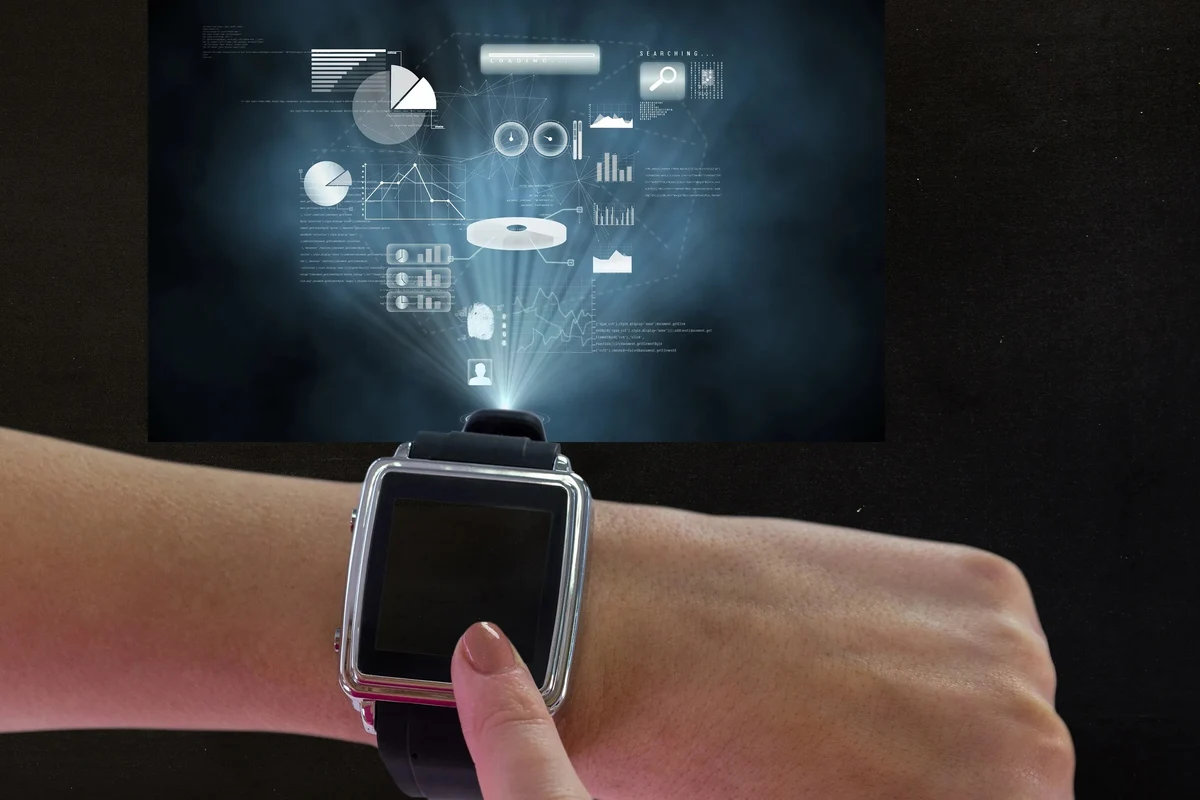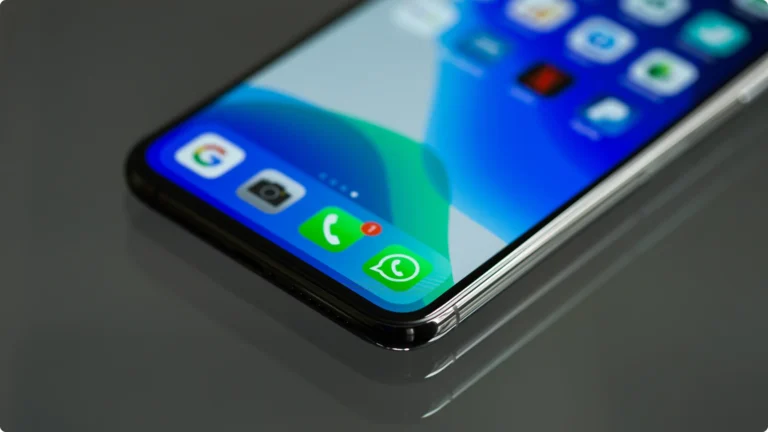Have you ever stared at your wrist and wondered, “What else can this little gadget do?” We’re already using smartwatches to count our steps, track our sleep, and even ping our phones. But here's the kicker: we’re just scratching the surface. The smartwatch game has evolved fast—and it’s no longer just a contest of who …
The Future of Smartwatches What’s Next for Your Wrist

Have you ever stared at your wrist and wondered, “What else can this little gadget do?”
We’re already using smartwatches to count our steps, track our sleep, and even ping our phones.
But here’s the kicker: we’re just scratching the surface.
The smartwatch game has evolved fast—and it’s no longer just a contest of who has the flashiest screen.
Now, it’s a full-on tech arena where hardware design, cutting-edge software, and tight web programming come together to create smarter, faster, more connected devices.
What does that mean for you?
More intuitive user experiences. Deeper health insights. Apps that actually matter.
Wearable technology is no longer a luxury—it’s a platform driving the digital lifestyle.
So, buckle up.
We’re taking a deep dive into how smartwatches are setting a new standard for personal tech. It’s not just a screen on your wrist anymore—it’s a whole ecosystem following you wherever you go.
Key Trends In Wearable Technology Software Development
Integration Of Advanced Programming Languages In Wearables
Let me break this down.
You’ve got your smartwatch—and it’s running apps like it’s a pocket computer.
But what makes this slick, effortless experience possible? You’re looking at the heavy hitters: Swift (for Apple), JavaScript, and Python.
These aren’t just buzzwords.
They’re the driving force behind how your watch talks to your phone without making a mess out of your notifications.
Here’s why they matter:
- Swift: Apple’s go-to language for WatchOS development. Clean, fast, and secure.
- JavaScript: Great for real-time applications and lighter online interfaces.
- Python: Mostly for backend and health data processing algorithms. Fast to write. Easy to scale.
The takeaway?
Smartwatch apps are no longer just an extension of your phone—they’re becoming independent players, thanks to the fast evolution of wearable-specific programming.
Devices like the Apple Watch Series 9 owe their new gesture-control features and data processing speed to these coding frameworks.
Dynamic Web Development For Smartwatches
This is something a lot of folks overlook.
Smartwatches aren’t just devices—think of them like mini browsers. And with the rise of Progressive Web Apps (PWAs), they’re becoming more flexible than ever.
Why PWAs?
Because they load fast, work offline, and don’t eat up storage.
For developers, building once and deploying across wearables, phones, and desktops is a dream come true.
Now toss in API integrations and what do you get?
An ecosystem where your fitness tracker talks to your calendar, notifies your healthcare provider, and syncs with your smart fridge.
Okay, maybe not the fridge—yet.
Here’s a look at how it fits together:
| Development Approach | Advantages in Wearables |
|---|---|
| Progressive Web Apps (PWAs) | Fast, lightweight, and runs across devices |
| API Integration | Real-time syncing with other apps and services |
| Cross-Platform Tools | Write once, deploy everywhere—save time and budget |
Moral of the story?
The smartwatch experience isn’t confined to your wrist. It’s part of a bigger, smarter digital puzzle.
Innovative Wearable Technology Trends Empowering Smartwatch Evolution
Mapping The Latest Innovations
Let’s talk features.
Smartwatches have gone from simple step counters to full-blown health monitors—and it’s wild.
Take the Apple Watch Series 9, for example.
It brought gesture control into the game. You can now answer calls or scroll with just a pinch of your fingers.
No buttons. No screens. Just your muscle movements and some smart sensors doing the heavy lifting.
Or look at the Samsung Galaxy Watch6. It’s not just pretty—it’s loaded with health tracking metrics packed into a sleek form factor.
The updated operating system and better integration with Android apps make it a top rival smart watch worth mentioning.
And then there’s the Garmin Epix Pro Series. It’s basically the tank of smartwatches:
– AMOLED display.
– 31-day battery life.
– Rugged build.
– Built-in LED flashlight.
That’s not a watch. That’s a survival tool.
Each of these models is doubling down on features that tap into our obsession with health, productivity, and convenience.
They’re not trying to replace your phone—they’re enhancing your entire digital lifestyle.
Role Of AI And Machine Learning In Wearable Development
AI isn’t coming.
It’s already here—and it’s living on your wrist.
From predictive health warnings to personal fitness coaches, smartwatches are using AI to get smarter about you.
Machine learning is the real MVP.
It learns your patterns. It knows when you usually train, how often you breathe heavily during sleep, and how your heart reacts under stress.
Why is that a big deal?
– Smarter notifications that matter.
– Fitness insights that aren’t one-size-fits-all.
– Personal assistants that actually get your habits.
In fact, this tech is behind many of the health-focused upgrades we’re seeing in 2024 models.
The more data these watches collect, the better they get at offering meaningful, customized feedback.
So next time your watch tells you to breathe, maybe it knows something you don’t.
Advanced Software Integration: Programming Solutions For Smartwatches
Enhanced User Experiences Through Creative Software Design
You don’t need 100 apps on a smartwatch.
You just need five that actually work. And for that, the software has to be laser-focused on usability.
That’s where killer UI/UX and input methods like gesture controls and voice commands come in.
Think about the last time you fumbled with your phone in the rain.
Now imagine just flicking your wrist or using your voice to respond to a text.
Here’s what’s driving better smartwatch functionality:
– Gesture controls = hands-free navigation.
– Voice tech = natural, real-time interaction.
– Syncing software and hardware = ultra-smooth performance.
It’s not about more buttons or icons. It’s about making each interaction simpler.
That’s the real win in wearable tech innovation.
Real-World Case Study: The iRoCo Framework
Now, let’s talk next-level.
The iRoCo framework isn’t your typical smartwatch software project.
This tech lets you control robots and drones—with a smartwatch. That’s not sci-fi. That’s engineering brilliance.
This system uses probabilistic differentiable filters— fancy term, I know—to interpret user commands precisely, even if you’re moving around.
The result? You get full control without being tied to a static setup.
In recent tests, participants piloted drones with iRoCo 32% faster than with clunky traditional remotes.
Less frustration. More efficiency. Real-world proof of how deep software integration can change how we interact with machines.
Want to geek out more? Check the breakdown in this academic deep-dive via this study on the iRoCo Framework for intuitive robot control using smartwatches and smartphones at [arxiv.org](https://arxiv.org/abs/2403.07199?utm_source=openai).
This isn’t just wearables keeping up with the world.
It’s smartwatches stepping up to control it.
Smartwatch Product Comparison: Discovering Market Advantages
Feature-Level Comparison of Top Smartwatch Models
When you’re shopping for a rival smart watch, it often comes down to the details—who’s packing in the best tech without bloating the experience? Apple, Samsung, and Garmin have all stepped into the ring, each swinging their own set of signature punches.
The Apple Watch Series 9 leads with its S9 chip, making everything snappy and power-efficient. But its real party trick? Gesture control. You can answer calls or control apps just by pinching your fingers. For folks who prioritize health, the Series 9 brings advanced heart rate tracking and blood oxygen monitoring into a sleek, minimal design wrapped in seamless integration with iOS.
Samsung’s Galaxy Watch6 isn’t just about looks—it marries form and function. With upgraded health features like body composition measurements and a brighter display, it steps up the game on Android. It’s the go-to rival smart watch for anyone deep in the Samsung or broader Google Wear OS ecosystem.
Garmin’s Epix Pro takes a different route. It’s built for the hardcore adventurers with its AMOLED display and jaw-dropping 31-day battery life. And if you’re hitting the trails, the built-in LED flashlight and GPS will come in handy. It’s less of a digital lifestyle watch and more of a rugged athlete’s coach.
Each contender plays to a specific type of user. Apple bet on seamless UX and app variety, Samsung doubled down on versatility, and Garmin leaned into endurance and outdoor performance.
Drawing on Competitor Analysis for Wearable Devices
So, what are the major players doing differently, and how can newcomers learn from them? One big takeaway—Apple thrives because of a tightly controlled ecosystem, while companies like Samsung and others embracing Wear OS are leaning toward open-system flexibility.
Apple Watch’s success hinges on seamless pairing with other Apple gadgets and an App Store full of polished, purpose-driven apps. It’s not just a watch—it’s part of a lifestyle. Meanwhile, Samsung’s trick is balancing Android compatibility with its own design flair.
The takeaway for any company eyeing a rival smart watch? Focus on tight cross-platform integration or dominate one ecosystem well. Taking cues from the software-smart hardware combo that Apple perfected—or offering hands-on customization like Garmin—can set a product apart in this crowded ring.
Market Analysis: Unlocking the Future of Smartwatch Technology
Growth Projections and Consumer Trends
The smartwatch space isn’t just growing—it’s sprinting. The global market, clocked in at approximately USD 33.58 billion in 2024, is expected to more than triple by 2032, hitting north of USD 105 billion. That’s driven by users wanting more than step counts.
So what’s drawing people in? It’s less about checking messages on your wrist and more about real-time health tracking, personalized productivity, and a solid extension of your digital life. From monitoring blood oxygen levels during your run to managing your calendar without pulling out your phone, smartwatches are turning into digital Swiss army knives.
More folks are chasing a digital lifestyle that’s health-conscious and connected—and brands are dishing up exactly that. Gesture control, ECG monitoring, and smooth integration with everything from smartphones to smart thermostats show that smartwatches are no longer niche gear—they’re everyday essentials.
If you’re looking to understand where the growth really lies for any rival smart watch product, look no further than consumer demand for feature-rich experiences coupled with whisper-quiet background performance.
Regional Market Insights and Opportunities
The numbers tell a clear story—North America is leading the pack. As of 2024, it holds nearly 39% of the total smartwatch market share, and the U.S. alone is tracking toward USD 20.87 billion by 2032. That’s a big bite of the global pie.
But there’s more to the map. Europe is closely following, especially as smart health initiatives pop up. At the same time, emerging markets in Asia, Latin America, and parts of Africa are becoming promising frontiers. What they lack in initial adoption, they make up for in opportunity.
The key factor? Affordability meets usability. There’s a hungry segment of buyers ready to invest in smartwatches that offer solid utility without breaking the bank.
For any rival smart watch maker with plans to scale, these regions represent untapped potential primed for growth—particularly if tech can stay user-friendly and wallet-friendly.
Building a Digital Transformation Strategy for Wearable Devices
Leveraging the Power of Software Integration
Smartwatches are no longer solo artists—they’re part of a band performing on your wrist, smartphone, home, and cloud. What keeps this music playing smoothly? Software integration. It’s the magic that turns a wearable into a central controller for everything from thermostats to fitness trackers.
Consumers now expect their smartwatch to fit into their digital lives as seamlessly as their earbuds or credit card. When developers bake in compatibility with IoT devices—home alarms, automation systems, smart lighting—it transforms the watch from accessory to command center.
Just look at how intuitive systems like the iRoCo framework are bridging human movement and real-world controls for robots and drones. It’s not sci-fi anymore—it’s a peerless example of smartwatch software pushing boundaries.
The path forward for any rival smart watch brand? Focus on interoperability, app expansion, and creating ecosystems where one wrist wearable seamlessly connects your entire digital life.
Role of Data-Driven Market Adaptation
Brands aren’t just throwing features at the wall anymore—they’re tracking what sticks. Real-time data from users helps companies tailor experiences, ditch clunky designs, and focus on what actually improves lives. That’s how modern smartwatches stay ahead of the game.
This means companies can fine-tune everything—from workout metrics to sleep tracking—to suit personal habits. Want a productivity-focused interface with zero fluff? Prefer sleep insights that adjust based on seasonal rhythms? Smartwatch software can deliver all that if built with feedback loops at its core.
Market adaptation isn’t just about reacting; it’s about reading user needs in real-time and shaping products that fit. A winning rival smart watch will be driven by data, not guesswork—built for the user’s future, not just the company’s roadmap.
Smartwatch Development Strategies: Key Takeaways for Innovators
Emphasizing Consumer-Centric Product Design
People don’t care how shiny your rival smart watch is—it better work smoothly and feel natural on the wrist. That’s the baseline.
What sets the winners apart? It’s not a fancy strap or how many sensors it packs. It’s usability.
In the smartwatch game, UX/UI testing isn’t optional—it’s the battleground. You’ve got to know how real users, not just your dev team, interact with the thing daily. Do they scroll, tap, double-tap, or just ditch it in frustration? That feedback loop? Critical.
You’re balancing three dimensions here:
- Aesthetics: Look sleek. Match someone’s vibe, not just specs.
- Functionality: Do the basics perfect—notifications, timers, workouts. Then layer the fancy stuff.
- Software capabilities: Pair fast, update smoother, and never crash halfway through a jog.
This trifecta turns your smartwatch from “just another gadget” into someone’s daily companion.
Collaborating Across Technology Landscapes
No one builds a killer rival smart watch solo. You need a mashup of brains: engineers, UI designers, machine learning folks, even biomechanics geeks these days.
Let’s peek behind the curtain. Apple’s not just throwing hardware at you. The Watch Series 9? That was born from a tag team of S9 chip designers, iOS engineers, biometric data analysts, and motion control specialists. Gesture control didn’t pop out of nowhere—it took serious grind in R&D labs.
This isn’t just collaboration—it’s orchestration. You want breakthrough features? Build an ecosystem where coders chat with designers daily. Get your software folks nerding out with your sensor devs. Share failures early. Fix them faster.
When each team zones in on results, not ego, magic happens. That’s how you outpace the other players in the smartwatch arms race.
Programming Insights: Staying Ahead in the Competitive Market
Advanced Programming Languages Driving Innovation
Here’s what most people misunderstand: your app’s speed and battery drain? That comes down to what’s under the hood—your codebase.
If you’re serious about building a next-gen rival smart watch, you better know your tools. Swift and Kotlin? They’re the main players here—lightweight, fast, native. But what about cross-platform stuff like Flutter or React Native? Versatile, sure, but sometimes you trade performance for portability.
Native APIs are the backbone. WatchKit (for Apple) gives polished integration, haptic feedback control, and full access to health data—but with sandbox restrictions. Google’s Wear OS APIs? More flexibility, especially for Android devs, but not always reliable across devices.
Go native if you’re performance-obsessed. Look at cross-platform if you’re chasing volume fast. Just don’t fall into the trap of shiny frameworks that lag when your user jogs uphill.
Ensuring Long-Term Scalability and Adaptability
Building for now is easy. Building for tomorrow? That’s the real grind.
When your rival smart watch app hits a dozen updates, will it stay seamless or stutter out? You’ve got to bake in modularity from day one. This isn’t about reworking code every quarter—it’s about writing once and evolving constantly.
Want to keep your app nimble? Here’s the playbook:
- Separation of logic and interface: Don’t bind the body to the brain. Keep UI layers flexible, especially for fast-changing platforms like watchOS and Wear OS.
- Cloud-first architecture: Offload when possible. Saves power, boosts sync, and supports more frequent updates without breaking things.
- Version fallback support: Test legacy hardware. If you leave Gen 1 users behind, that’s lost loyalty—and sales.
When your app flexes with hardware shifts, you extend its shelf life by years, not months.
Industry and Competitive Takeaways: Dominating the Wearable Tech Market
Insights into Competitor Analysis Strategies
How do you make your rival smart watch stand out in a crowd thicker than a Vegas trade show? You study your enemies.
Competitive analysis isn’t new—it’s just underused in wearables. Fossil Group jumped from fashion to function by integrating Google’s Wear OS fast. Fitbit pivoted from step counters to full-on health platforms before anyone pushed serious sleep metrics.
You don’t need to copy. You need to extract the insight. If someone’s customers leave—why? Bad UX? Boring design? Too pricey? That’s gold.
Dig into your rivals’ reviews. Scan patents. Read between product update cycles. Every missed feature or bug fix is a free gift wrapped in market signals.
Knowing what your competitor won’t do? That’s your opening.
Positioning for Market Advantage
Branding is not a logo—it’s the promise behind your product. And in wearables, that promise better be speed, accuracy, and no headaches.
Want to lead the pack in the rival smart watch game? Play offense.
Tech-first strategy wins when innovation isn’t staged—it’s baked in. Apple doesn’t wait for “market signals.” They drop gesture control before users even know they want it.
To stay agile:
- Build micro-pivot strategies: Don’t wait for failure. Iterate weekly, not quarterly.
- Own your customer data: Feedback isn’t vanity—it’s your roadmap.
- Double down on reliability: If your watch crashes mid-run, you’re toast.
The strongest brands in wearables feel trustworthy, modern, and just smart enough to impress—without intimidating users. Walk that line like a tightrope.
Future of Wearable Technology: A Global Perspective
Potential Smartwatch Breakthroughs on the Horizon
Let’s talk next-level. What’s coming for smartwatches? It won’t be just skinnier bands or new colors.
We’re staring down the barrel of:
- Implant-grade biometric sensors: Continuous blood glucose tracking is in the cards. So is hydration tracking and stress prediction.
- Mixed reality sync-ups: Imagine your rival smart watch controlling VR workouts or AR interfaces on the go.
- AI-powered health coaches: Not just pulse counting—behavioral adjustment based on real-time insights.
And let’s not ignore quantum computing whispers. When processing power hits that level, smartwatches won’t just track—they’ll predict.
Healthier lives. Smarter workouts. Seamless living. That’s where wearables are gunning.
Charting the Path Toward Global Tech Adoption
Great tech is useless if only a few people can afford or access it.
You want smartwatch domination? Think globally. Right now, smartwatch penetration is mostly clustered in North America, Western Europe, and bits of East Asia. What about the rest of the world?
To break into emerging markets, watch makers need to tackle these:
- Local pricing strategies: A $300 watch won’t move fast in Southeast Asia without serious value or bundled services.
- Connectivity gaps: Rural areas without 4G? Your watch better offer high offline functionality and sync later.
- Regulatory variations: Data laws vary. Your software needs flexible privacy protocols baked in from build-time.
True rival smart watch success doesn’t come from just exciting tech—it’s culturally aware, infrastructure-savvy, and adaptable at scale.
That’s how you take wearable tech mainstream far beyond fitness junkies and Silicon Valley early adopters.






